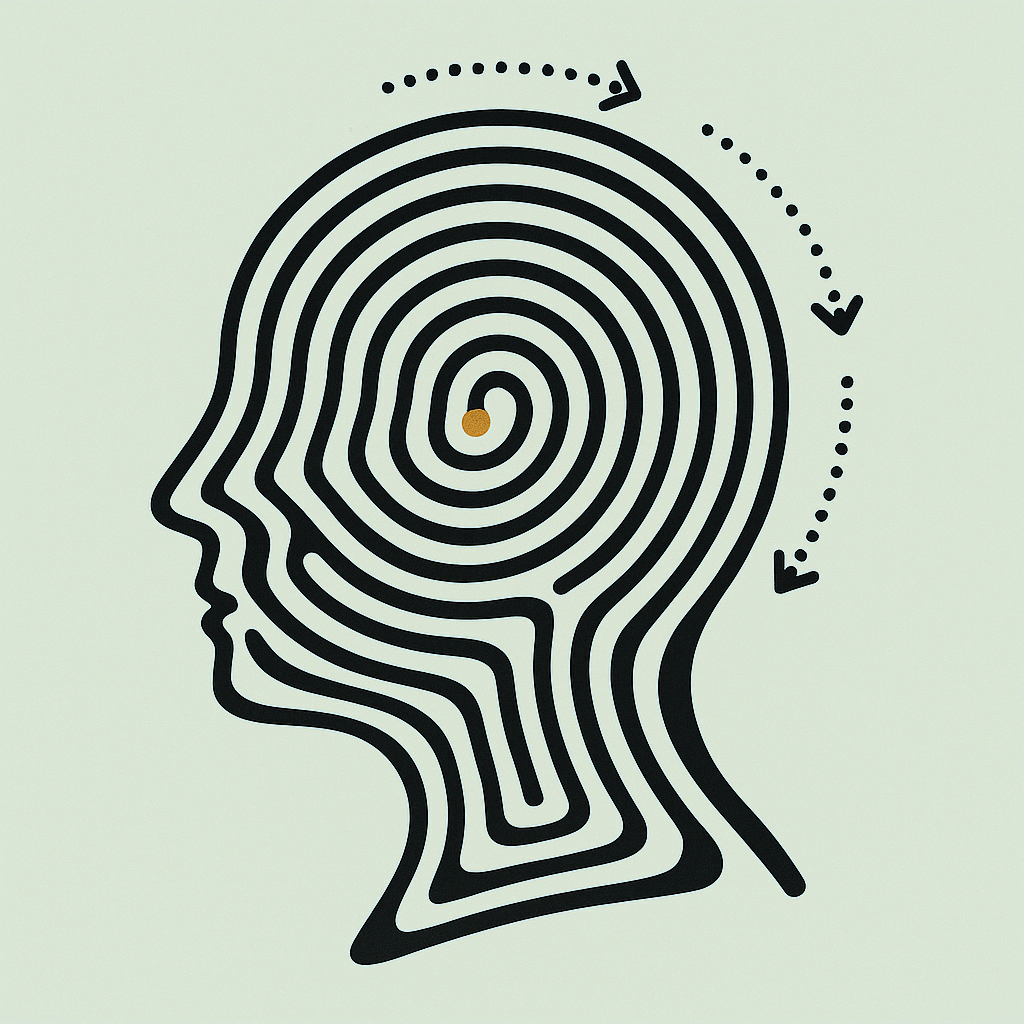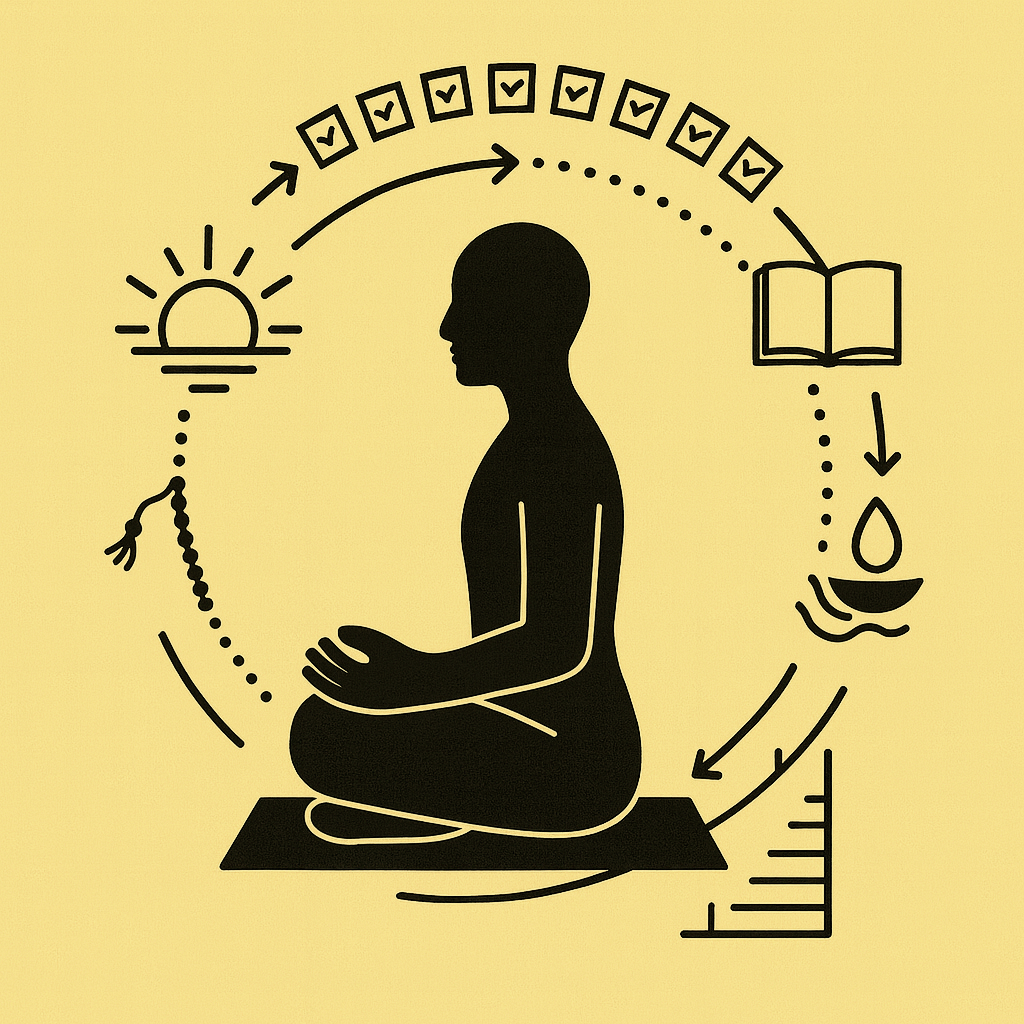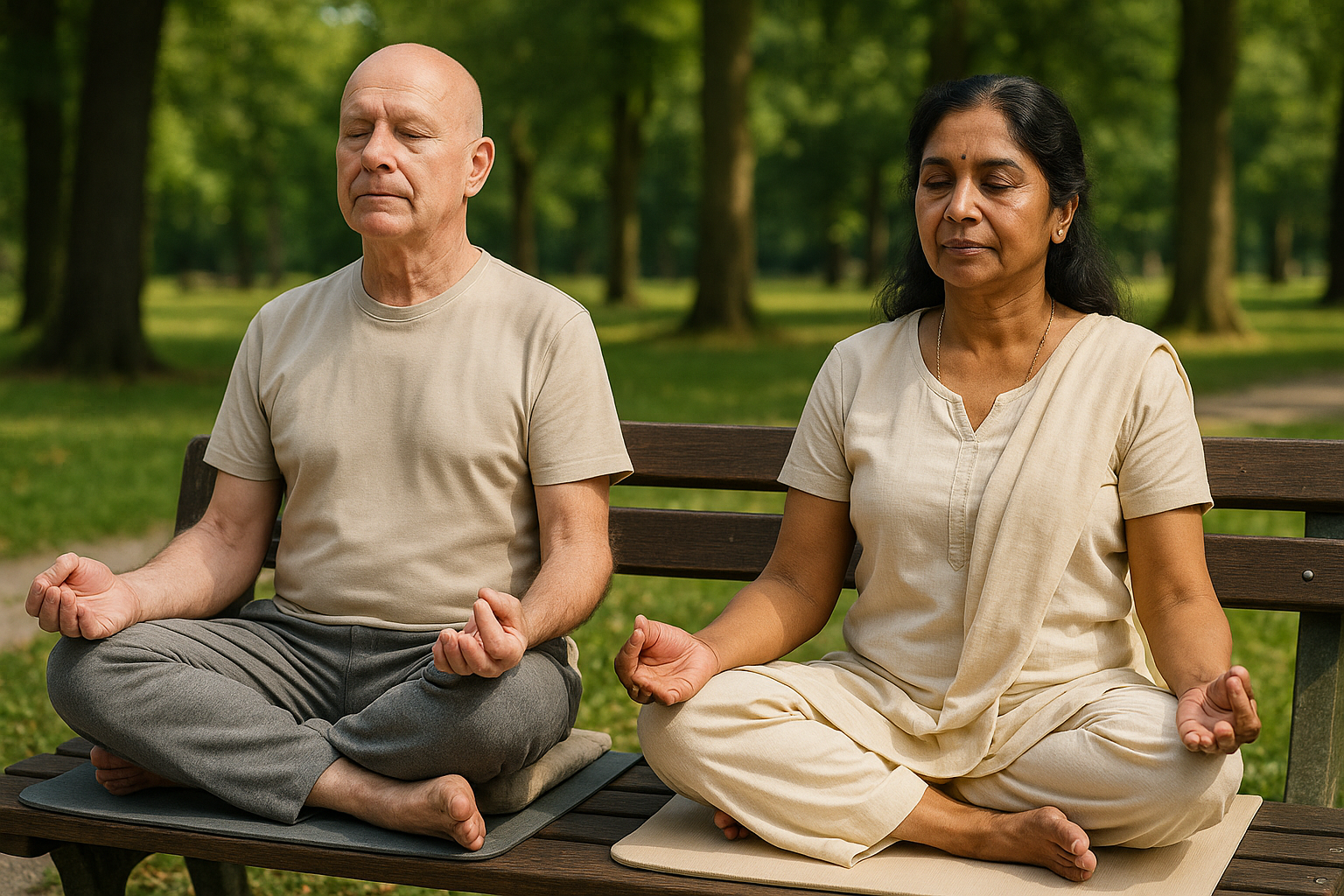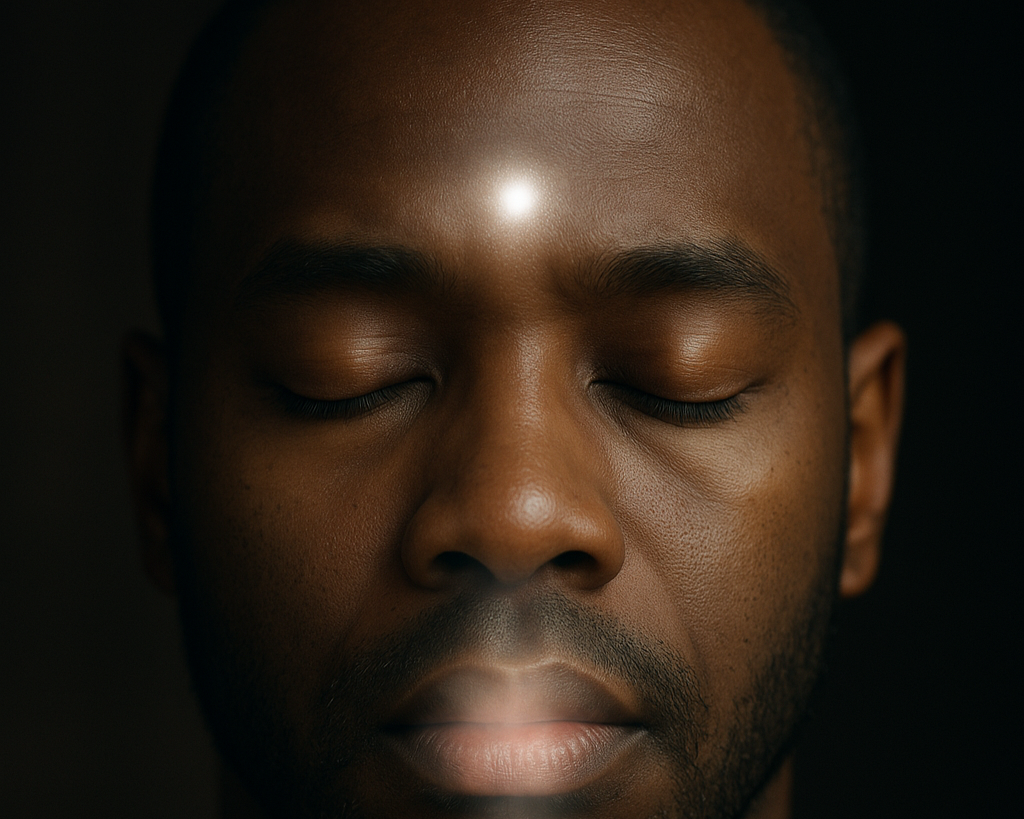Lingo for the journey ahead.
You don’t need a theology degree, read ancient Greek like the stoics, or speak Sanskrit like a yogi to get started on your journey to personal growth and inner transformation. Big traditions use their own language or special vocabulary for the same core human project: living well, seeing reality clearly, and practicing what matters for the human condition.
Scholars spend decades tracing the deep architecture of these teachings and arguing about fine points; this page cuts through that thicket and gives you a few clean on-ramps. We’ll translate the jargon into plain speech, highlight some common themes that may help you, and point you to the next breadcrumb if you’re ready. Think of it as a simple orientation: just enough language to navigate, not so much that you drown in terms before you get a taste for the truth that ancient texts are pointing to.
Study refines your map; practice walks the terrain. Remember that one authentic experience, won through sincerity and dedication to your personal transformation, teaches more than shelves of commentary and philosophy. Calibrate by results in speech, work, and relationships instead of rhetoric. Judge the outcome of your efforts by their fruits. When honesty, patience, and presence grow, you know your are on track.
The Basics
Here are some definitions to common terms you may encounter when first delving in to Indian philosophy.
Oṁ / AUM:
A sacred sound used to focus attention and calm the mind. It points to the one reality behind everything.
Karma:
Cause-and-effect: what you intend and do shapes what you become and experience. Paying close attention to your actions and inactions helps build a moral life.
Saṃskāra:
Deep habit-patterns that tilt what you see and choose. They loosen through ethical living, calm attention, and clear understanding.
Sādhanā:
A steady discipline over a period of time that consists of breathing exercises, movement, meditation and prayer. It readies the mind for insight and greater perception.
Māyā:
A veil of ignorance over your perception and consciousness. It causes confusion between the illusion of what things seem to be vs. what they actually are in reality.
Four States of Consciousness and Beyond
Indian yogis describe four unique states of consciousness leading to a permanent absolute awareness
Waking
The waking state is simply being awake, with your five senses on and attention turned to the outside world.
Dreaming
The dreaming state is being asleep while your mind plays its own images and stories, largely cut off from the outside world..
Deep Sleep
Deep dreamless sleep is being fully asleep with no dreams or mental images. The mind is quiet and unaware.
Pure Consciousness (Turiya)
The quiet, constant awareness that underlies and outlasts waking, dreaming, and deep sleep states.
Beyond
Effortless abidance in Turiya.
Mantra??
A mantra is a focused set of sounds, like a verbal tuning fork. It is repeated to steady the mind and line up breath, body, and attention. Many ancient philosophical schools held that certain syllables carry intrinsic capacities for personal transformation, so precise repetition could shape focus, mood, awareness and deeper thought.
Om
This is called the primordial sound. It is a single, rounded syllable, “A-U-M”, that you chant slowly on one breath. It is used as root sound for other mantras. As a calm steadying sound it’s sustained vowel and humming lengthen the exhale, smooth breathing, quiet mental chatter, and act like an audible metronome. This effect centers attention, sets intention, and synchronizes a group at the start or close of practice.
Om Namah Śivaya
This literally means “Salutations to the Auspicious One” (with namaḥ = “salutations” and Śiva = “Auspicious One”) prepended with “Om”. The “Auspicious One” simply refers to a form of God as one whose presence is a good sign. This is seen as inherently good and protective, bringing with it a blessing, luck, or good outcomes.
In practice this is a classic five-syllable mantra, repeated with the breath so its cadence steadies attention. In formal settings it also works as a sacred salutation, spoken when meeting friends, in letters, or to open and close a practice instead of a general “hello.” As a parting phrase, it serves as a benediction, “go with the Auspicious”. It is often heard in temples, ashrams, and yoga or meditation focused gatherings
Yoga? Yoke? Unite? Union?
Yoga means “to yoke”, or “to unite.” What exactly are we uniting with Yoga?
In simple terms it’s a set of practices that concentrate your body, breath, attention, values, and ego to unite them with the raw and unfiltered absolute truth within you. This is understood not through written words in a book, but rather by direct experience. There are 4 classical yogic paths that are complementary and map to the natural temperament of an individual.
Selfless Service (Karma Yoga)
Do your work as service to others and do it well. Don’t cling to the results or worry about whether or not you will be rewarded so your motives stay clean and your ego gets lighter. Act steadily with humility, clarity, patience, generosity, and cheerful detachment.
Devotional Love (Bhakti Yoga)
Love the Divine with your whole heart, body, and mind through prayer, song, and remembrance until that love shapes how you live. Build a living relationship with the Divine and let love, trust, and surrender guide feelings, choices, and daily life.
Insightful Knowledge (Jnana Yoga)
Study reliable teachings, reflect carefully, and use steady attention to discriminate between illusion and truth. Find the true Self beyond the body, senses, mind, intellect, and ego using inner insight to dissolve confusion through reason, contemplation, and insight.
Focused Awareness (Raja Yoga)
Follow a program of ethics, healthy habits, postures, breathing, inward concentration, and meditation so the mind becomes calm and can rest in deep stillness. Train regularly with consistency, kindness, curiosity, simplicity, and perseverance toward illumination.
Around the year 400 (some experts say much earlier), an Indian guru named Patanjali organized earlier teachings and wrote them down in a clear eight-part guide. This was later labeled Raja Yoga.
The Eight Stages
1. Ethical Restraint (Yama)
The Five Don’ts: don’t harm, don’t lie, don’t steal, don’t dissipate vitality, and don’t be greedy. Practiced steadily, these quiet hostility.
2. Personal Habits (Niyama)
The Five Do’s: do keep clean, do cultivate contentment, do practice disciplined effort, do self-study, and do surrender to existence, God, or the highest truth.
3. Comfortable Posture (Asana)
Physical fitness that creates relaxed body alignment and steadiness without strain leads to reduced agitations and resilience.
4. Breath Control (Pranayama)
After posture is steady, refine inhalation, exhalation, and holding the breath (length, place, count) to settle the mind.
5. Inner Attention (Pratyahara)
The senses “follow” the mind inward, loosening their grip on external objects to become a firm basis for concentration.
6. Single Focus (Dharana)
Pick one thing such as a mantra, the breath, your heartbeat, or a point of light and stay with it. Each attempt builds the muscle of attention.
7. Easy Mediation (Dhyana)
Meditative focus holds by itself, like a stream without breaks. You’re not “trying” to meditate; you simply become meditative.
8. Deep Awareness (Samadhi)
When attention settles so completely in silence that only clear, undistracted knowing shines - giving illumination, joy, peace, and celebration.

Reality Check.
This is not the “western” version of Yoga.
You will not receive any certificates.
However, if you are sincere and disciplined you will walk towards your authentic self and experience the best version of YOU that is possible.
Have you read enough yet?
Take it easy, we’re just regular folks.
We invite you to start your journey, today.
➔ ➔ ➔






























